Authentic Yakisoba (Japanese Stir-fried Noodles)
Ingredients
Yakisoba
- 140 g thinly sliced pork belly leaner option: pork loin
- ¼ onion thinly sliced
- 1 pinch salt and pepper
- 50 g green cabbage roughly chopped
- 2 ptns ramen noodles
- 1 tbsp cooking oil
- red pickled ginger (benishoga) optional topping
- bonito flakes (katsuobushi) optional topping
- aonori (dried green seaweed powder) optional topping
Yakisoba Sauce
- 1 tbsp Japanese soy sauce (koikuchi shoyu)
- 1 tbsp oyster sauce
- ½ tbsp Worcestershire sauce
- ½ tbsp sake or white wine
- 1 tsp tomato ketchup
- 1 tsp toasted sesame oil
- ½ tsp sugar
- ¼ tsp curry powder
- 1 pinch ground black pepper
Instructions
- Start heating a large non-stick pan or wok on medium and add a drizzle of cooking oil. Once hot, add 140 g thinly sliced pork belly, ¼ onion and season with 1 pinch salt and pepper. Fry until the pork is crispy and the fat has rendered out, and the onions are soft and dark. If you need to boil your noodles, start heating a pot of water ready. (Tip: if using extra vegetables that need sufficient cooking, add them here too.)
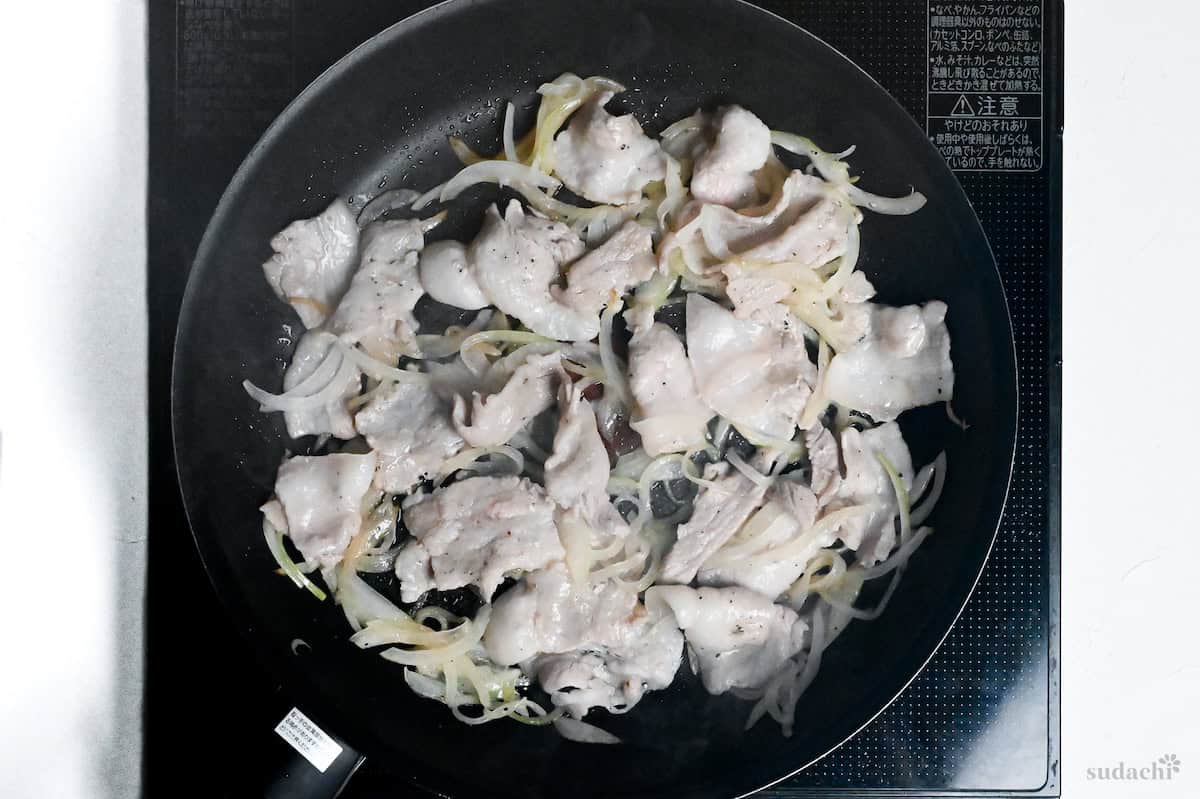
- If you are using dried or fresh noodles, boil them less than the instructed time. A good rule of thumb is to subtract 10 seconds from every minute of the recommended cooking time. Drain them, rinse them with cold water and shake thoroughly to remove as much moisture as possible.
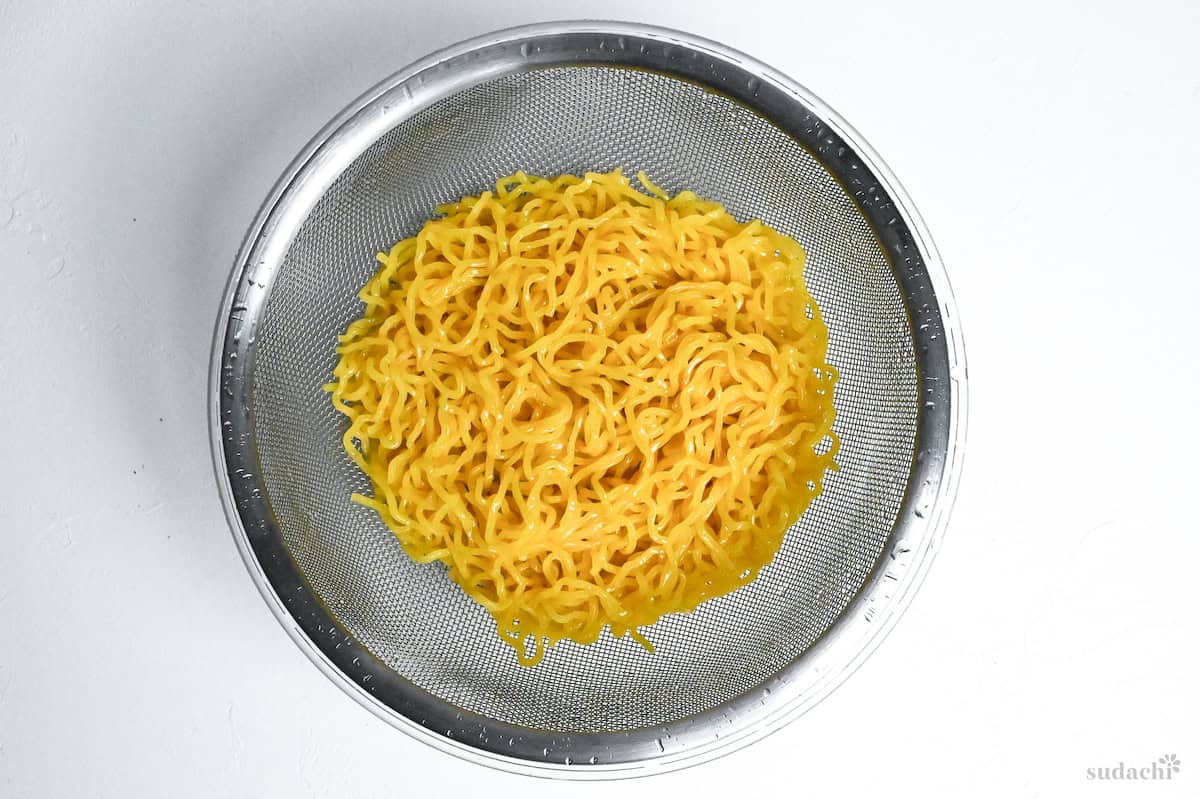
- Transfer the cooked pork and onions to a plate. We will reuse the pan to cook the noodles in the rendered pork fat. (Note: If the pan is too oily, feel free to wipe out the excess with kitchen paper.)
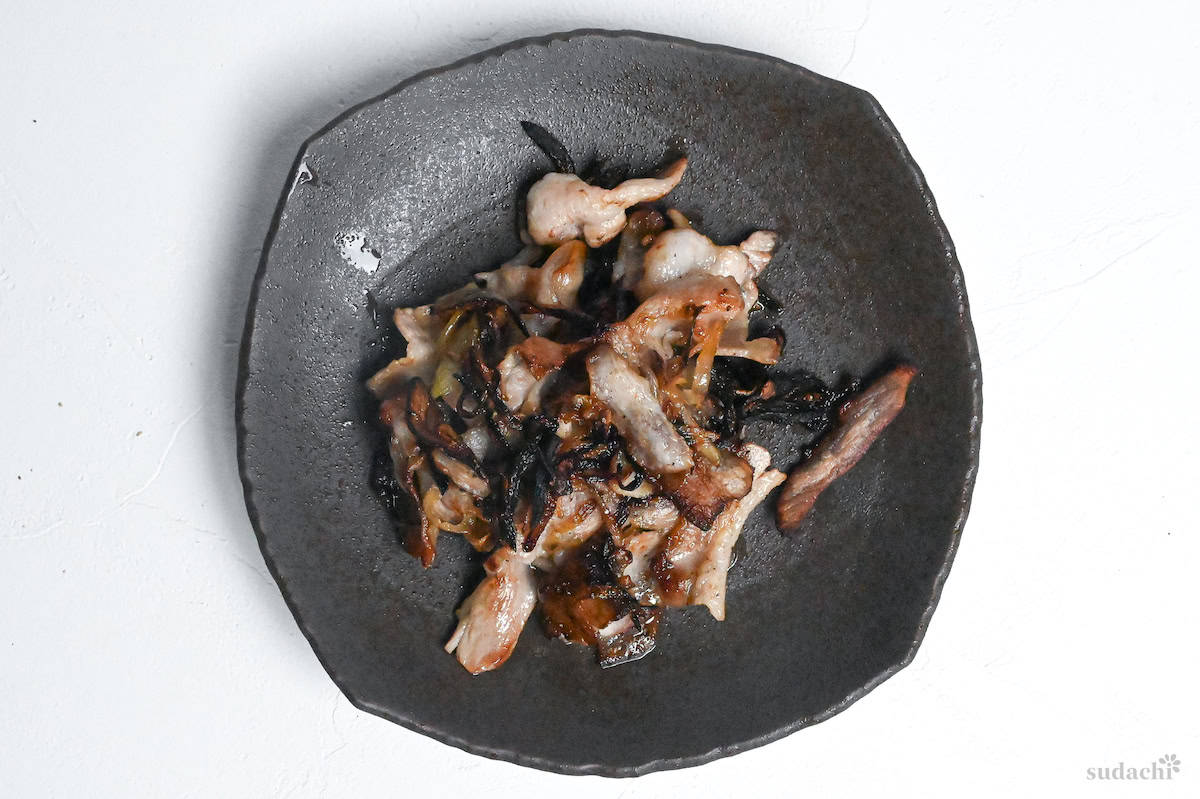
- Place 2 ptns ramen noodles in a bowl and add 1 tbsp cooking oil. Mix until the noodles are evenly coated in the oil.
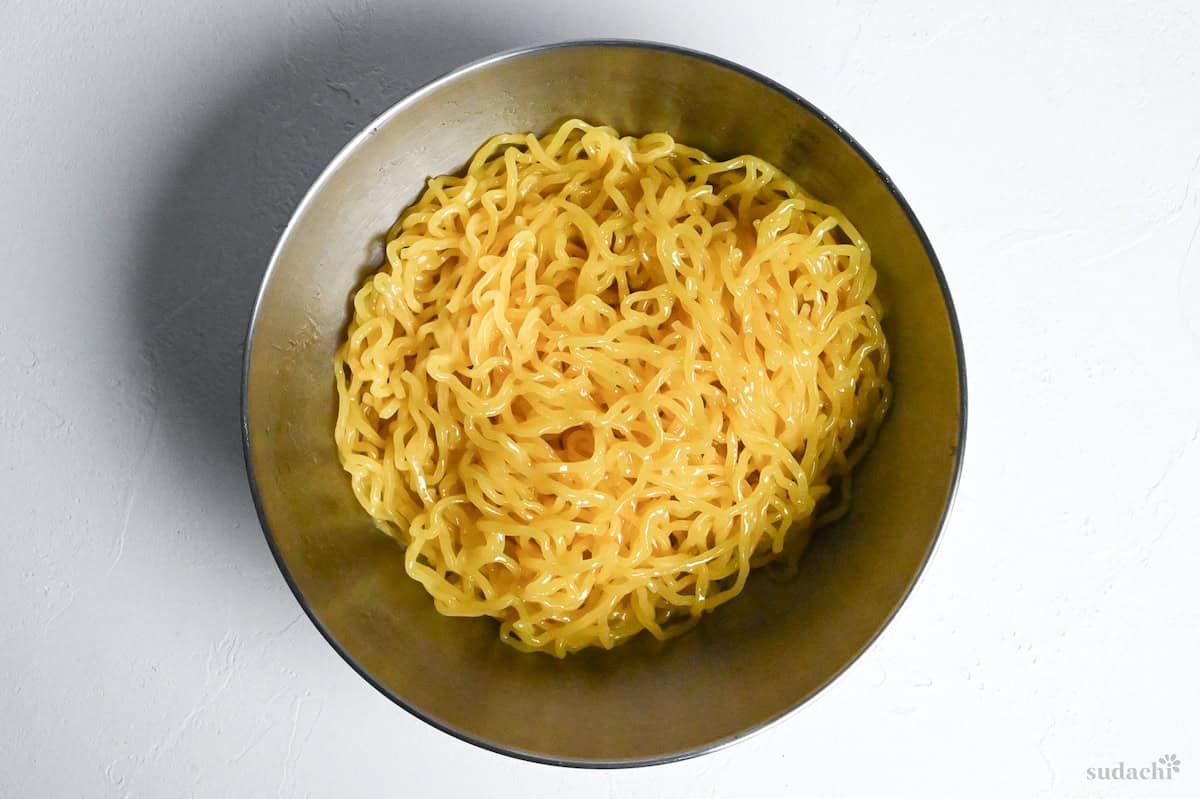
- Reheat the pan on medium-high, add the noodles and cook until both sides are slightly browned and crispy but not burnt.

- While the noodles crisp up, make the sauce by adding 1 tbsp Japanese soy sauce (koikuchi shoyu), 1 tbsp oyster sauce, ½ tbsp Worcestershire sauce, ½ tbsp sake, 1 tsp tomato ketchup, 1 tsp toasted sesame oil, ½ tsp sugar, ¼ tsp curry powder and 1 pinch ground black pepper to a small bowl and mix well.
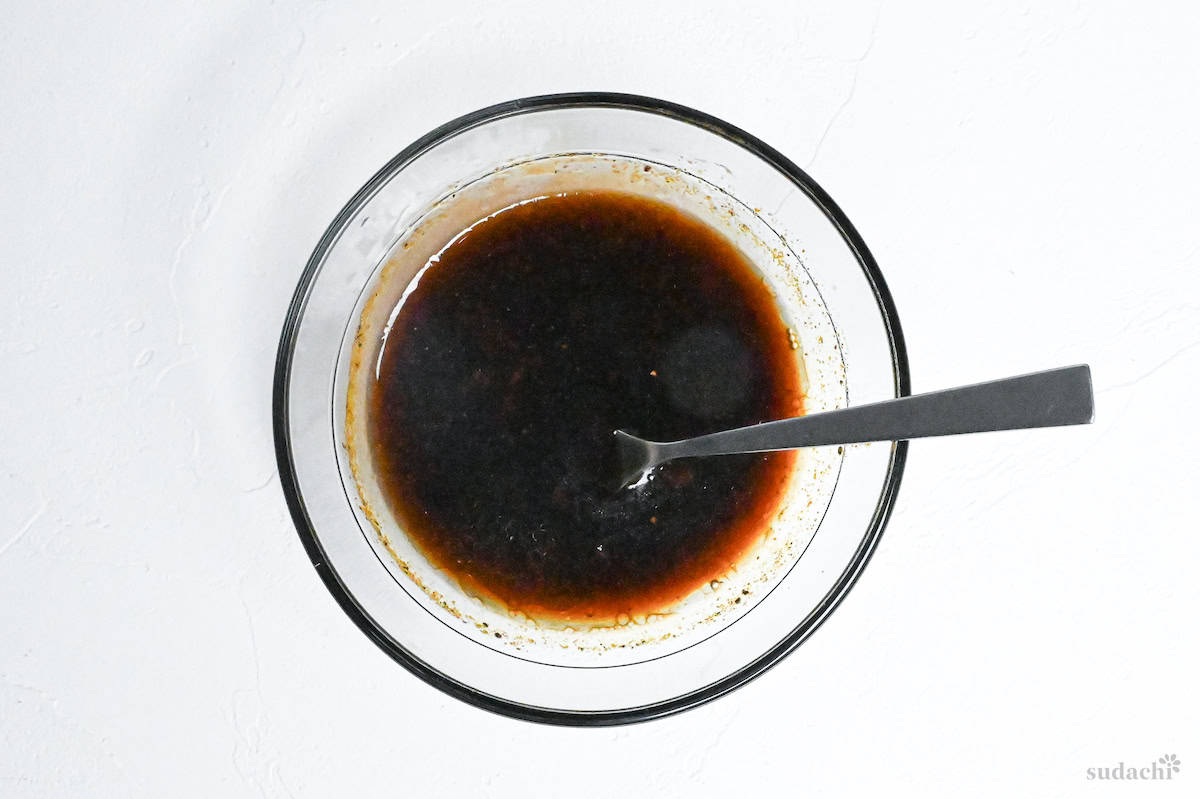
- Once the noodles are slightly crispy, pour the sauce over them and mix until evenly coated.
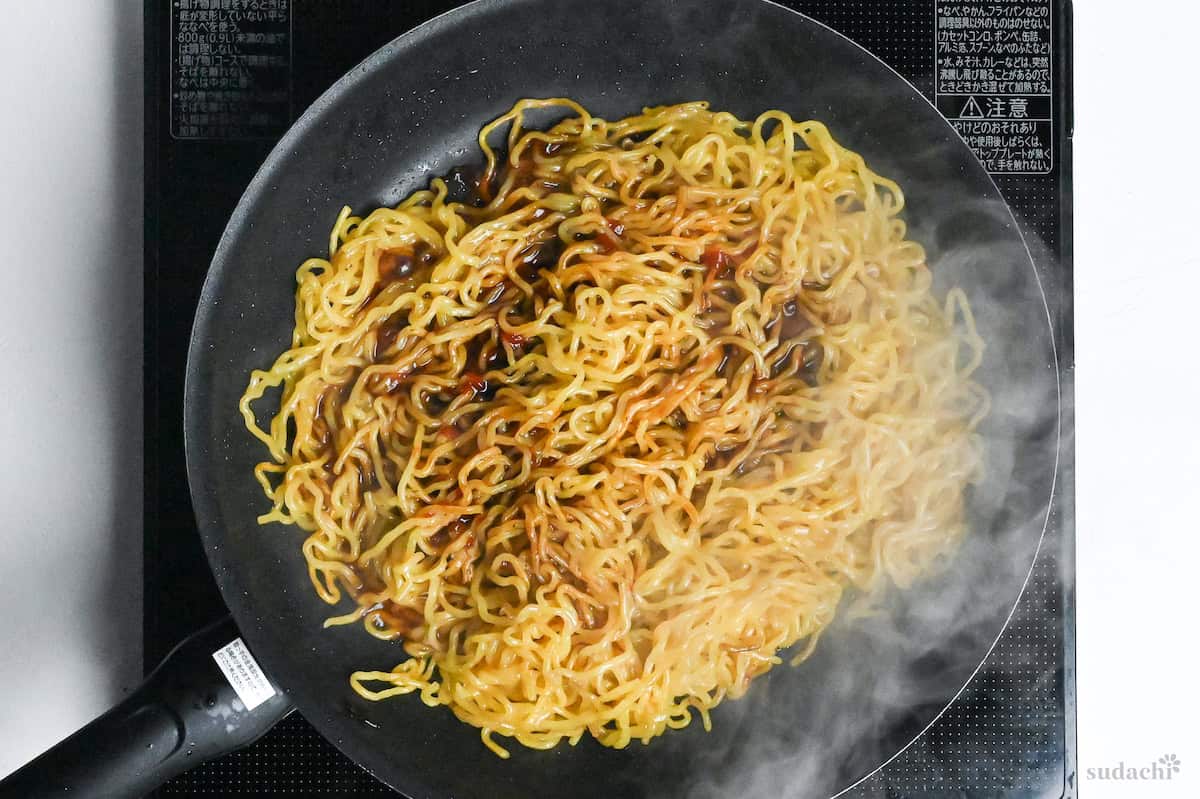
- Add the pork and onion back in, along with 50 g green cabbage (roughly chopped).
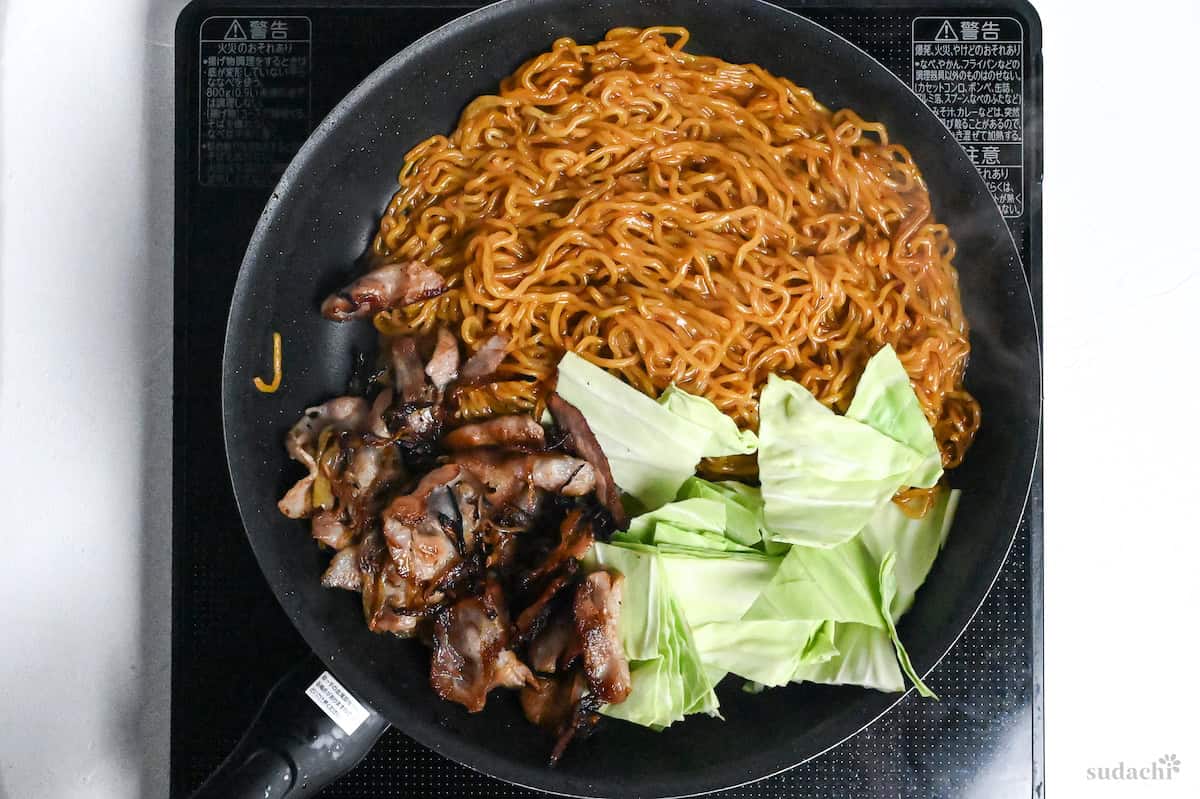
- Stir-fry for 1-2 minutes or until everything is warmed through.
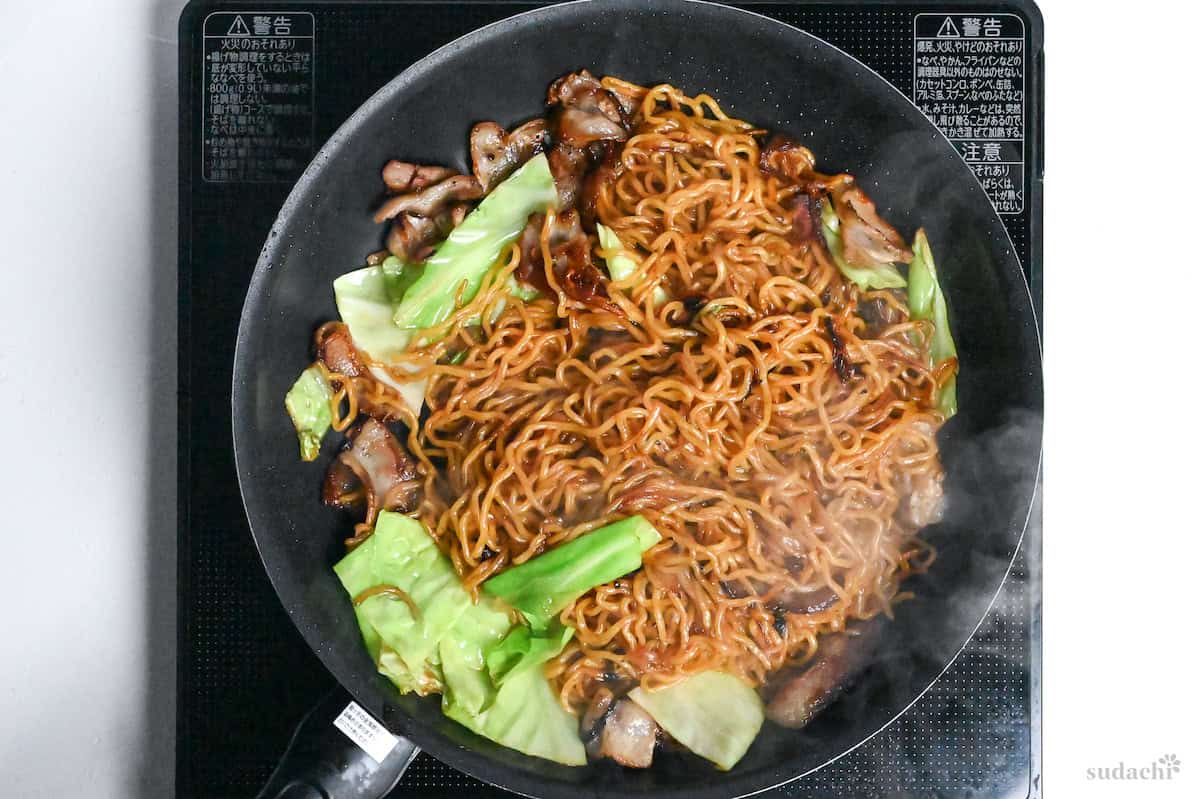
- Dish up and sprinkle generously with red pickled ginger (benishoga), bonito flakes (katsuobushi) and aonori (dried green seaweed powder). Enjoy!
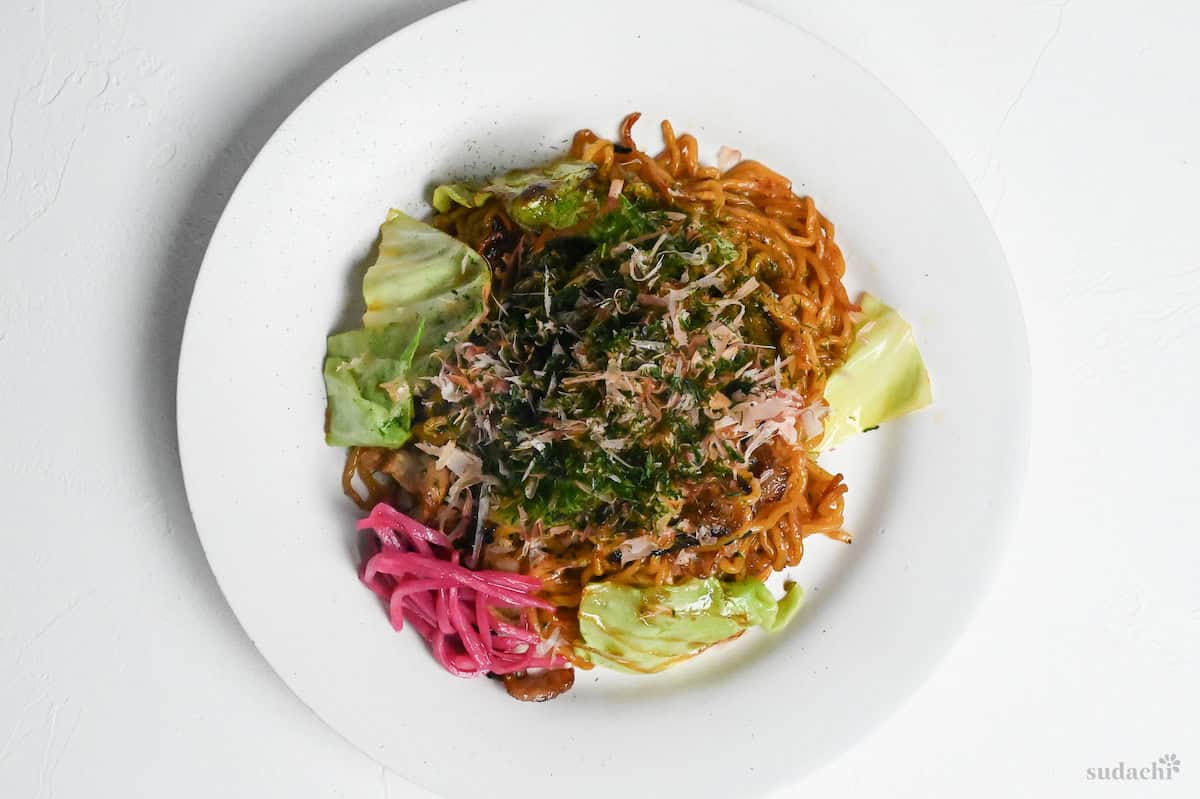
Notes
- Use a non-stick frying pan to prevent noodles from sticking.
- Skip boiling and oiling if using pre-steamed yakisoba noodles.
- Customize vegetables to your preference, but avoid using too many water-rich ones to prevent sogginess.
- If you want to make this yakisoba from fresh noodles, I'd suggest making your own ramen noodles or using my spaghetti ramen hack. I wouldn't recommend using instant noodles.
- Add extra cooking oil or lard to compensate when using leaner cuts or different proteins instead of pork belly.
- Store in refrigerator (up to 2 days) or freezer (up to 2 weeks). For freezing, spread portions flat in freezer bags with air removed. Best reheated in pan, though microwave works too.
- Serving ideas: Chicken karaage, Japanese potato salad, Hiyayakko, Japanese egg drop soup.